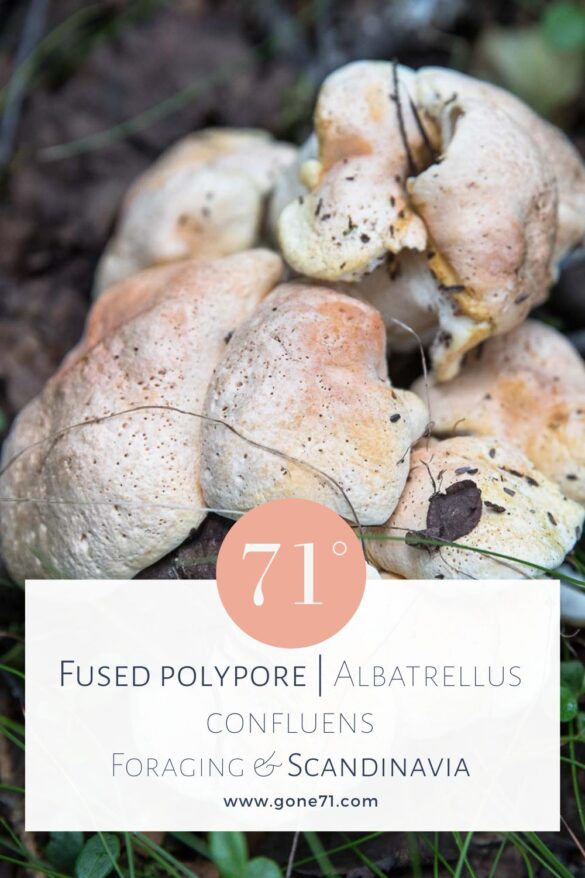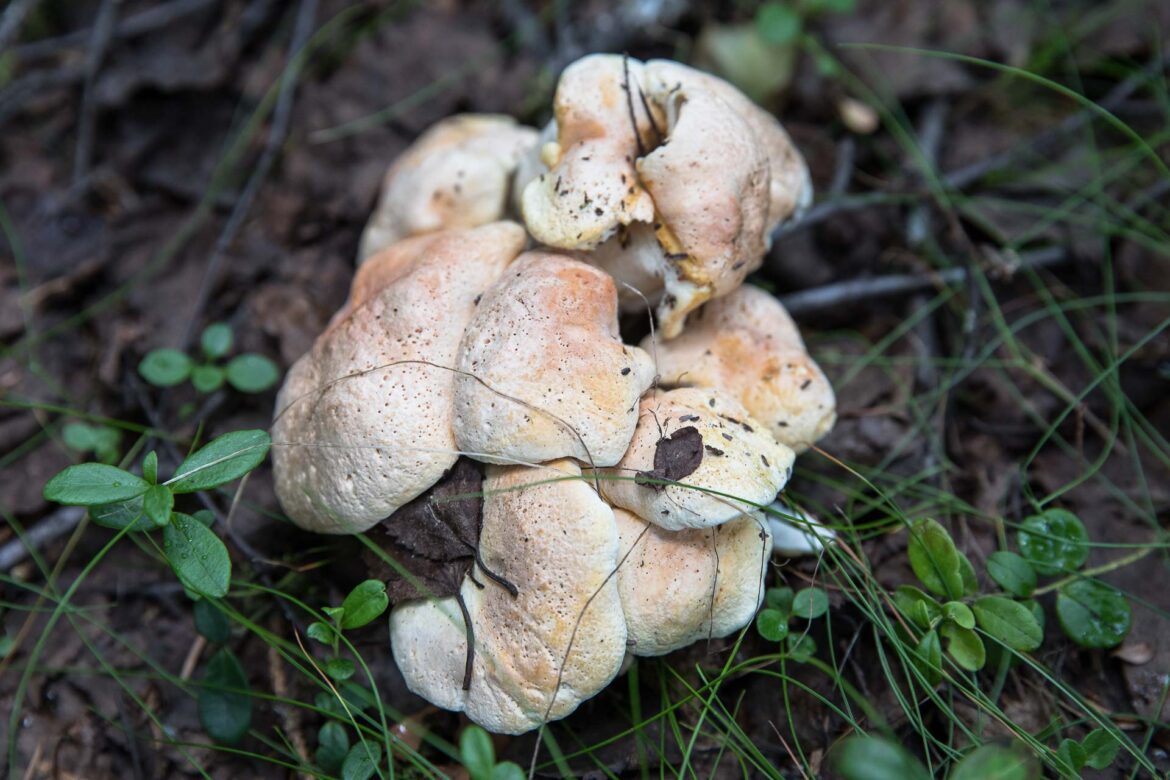swe.: Brödticka, tuvticka | nor.: Franskbrødsopp | fin.: Typäskääpä | dt.: Semmelporling
At a young age, Fused polypores (Albatrellus confluens) are considered a good meal but are generally not very famous among mushroom hunters. Old individuals taste bitter and are thus considered inedible by most.
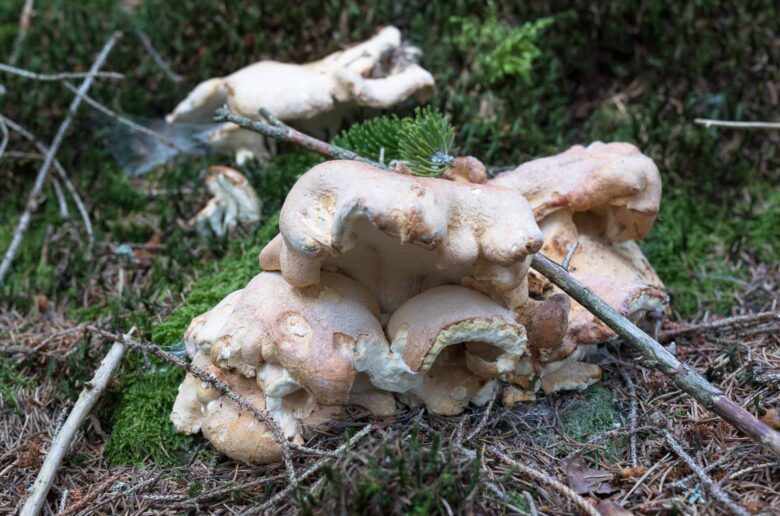
cap diameter: 3– 25 cm
months: June – November
colours: white-cream coloured flesh, yellowish to orange-brown cap
characteristics: often several stems are grown together
habitat: coniferous forests
smell: pleasant
taste: young specimen are mild, can get bitter later on
consumption: cooked (slightly toxic if consumed raw)
Appearance & habitat of the fused polypore
The surface of the cap is light yellow-brown and reddish in color. The very small pores are conductive and almost white, but turn reddish-brown uppon preasure and damage.
From August to October, the fused polypore is very common in spruce forests in southern and central Scandinavia and also other parts of Europe. The species is characterized by growing in dense hemispherical clusters so that its caps overlap in layers.
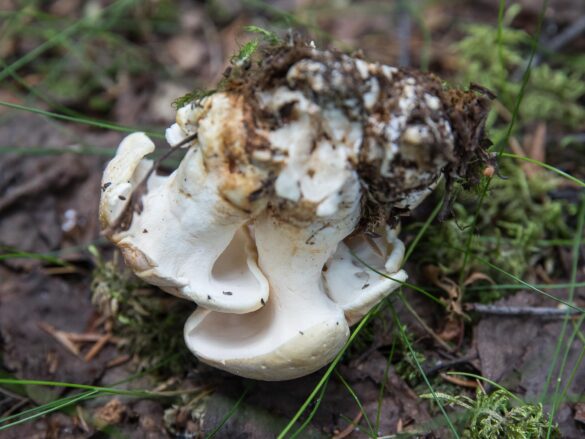
Lookalikes of the fused polypore
Fused polypores can be confused with the edible Sheep polypore (Albatrellus ovinus), hedgehog mushrooms (Hydnum repandum) and other polypores.
All white and yellowish looking hedgehog mushrooms are edible but make sure to identify them as such!
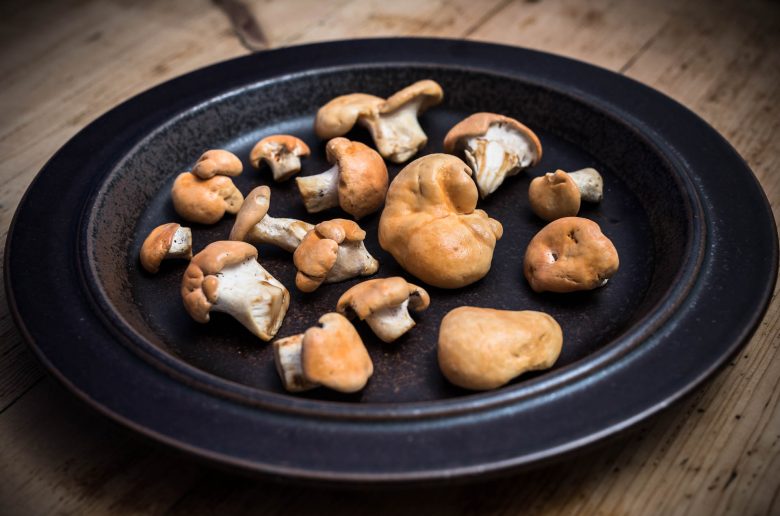
Fused polypore in the kitchen
This is a very good mushroom, e.g. preserved in oil or vinegar. Can be slightly bitter. Raw, this mushroom can lead to intolerances.
We have compiled this overview with the best of knowledge and belief, but do not claim to be complete and reserve the right to make errors.
Learn more about poisonous mushrooms and mushroom poisons here
↓↓↓
Find some inspiration in other mushroom recipes
↓↓↓
